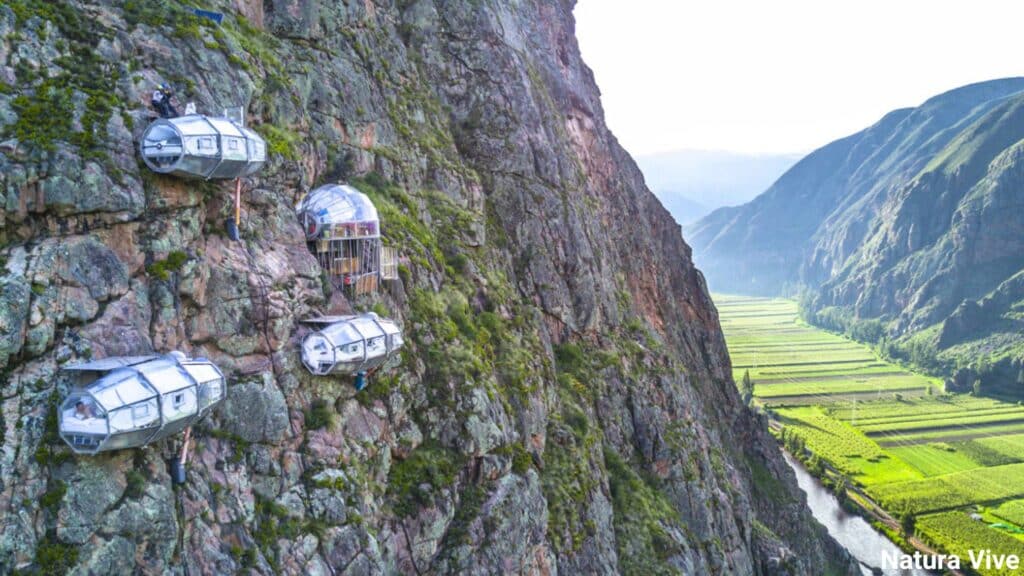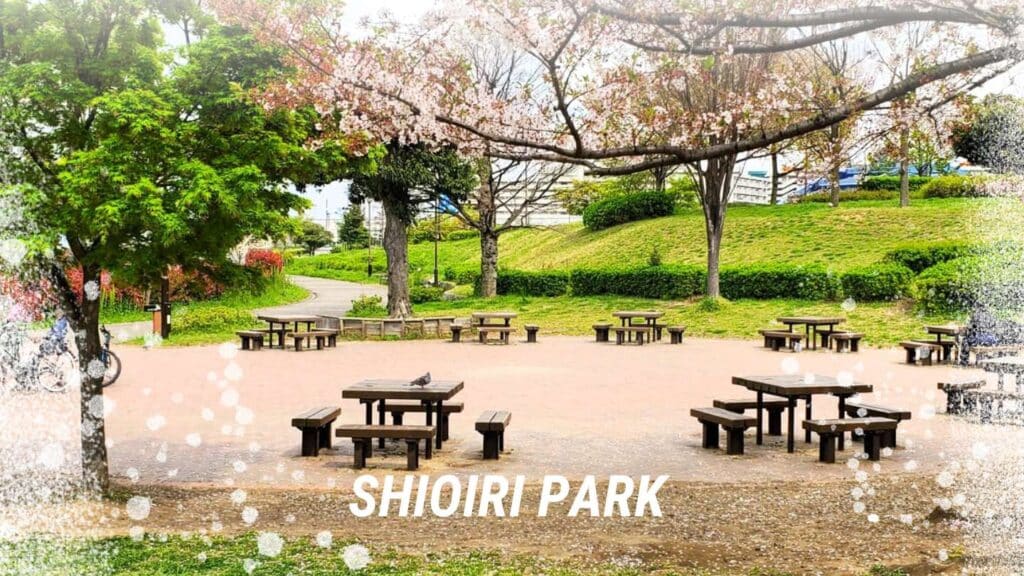Ever thought of spending a night in a room so small you could stretch out your arms and almost touch both walls? Tiny hotels are redefining what it means to stay in a unique, adventurous, and minimalist space. From pods and capsules to treetop spheres and even repurposed cranes, tiny hotels offer travelers a world of charm and adventure packed into a compact design. Whether you’re a solo traveler or just looking for something out of the ordinary, these small rooms offer some of the most extraordinary experiences around the globe.
The idea is constantly evolving. Here are 8 of the world’s most amazing tiny hotel rooms examples.
Table of Contents
1. Nine Hours
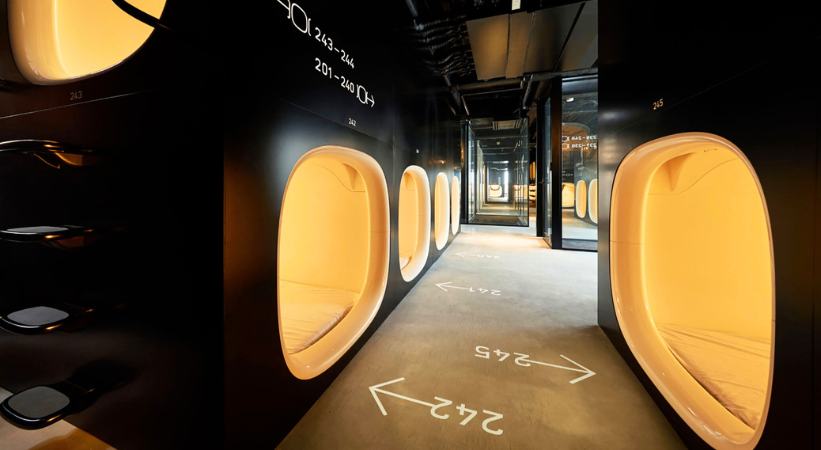
Sleep data is an uncommon by-product of Nine Hours, a network of 13 hotels located throughout Japan, from the west coast city of Fukuoka to the northeastern island of Hokkaido. Visitors can enroll in a “9h sleep fitscan” service at the Akasaka and Shinagawa Station (for men only), where sensors measure everything from facial expressions to breathing to produce a sleep report that tracks heart rate, detects sleep apnea, and even tracks snoring. Nine Hours stands apart from the competition in a market where novelty or affordability are frequently valued more highly than comfort.
Its rows of sleek, glossy sleeping pods would not appear out of place on a science-fiction film set, and the white, minimalist décor throughout the franchise carries on this clinical theme. The name alludes to the hotel’s cost-cutting strategy, which limits room rental to the necessary nine hours, giving guests seven hours for sleeping and an additional hour for getting ready and bathing. Do you simply need to take a nap? There are also hourly prices available.
2. Natura Vive
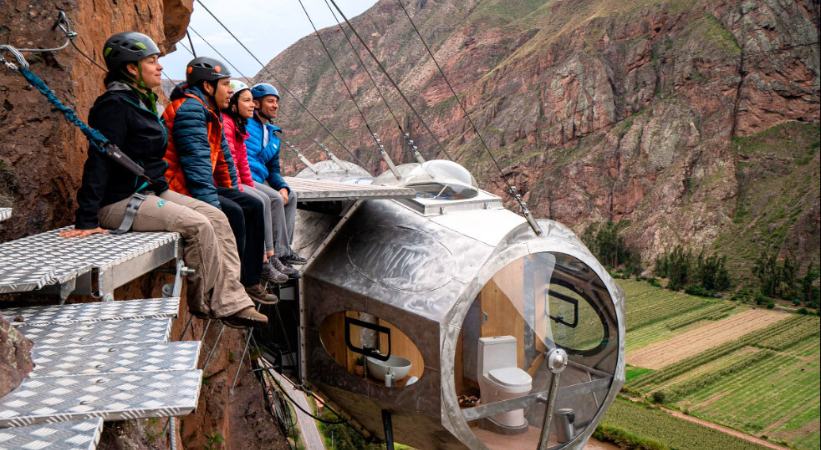
Natura Vive is an adventure tourism company located in the Sacred Valley of Peru, renowned for its unique and thrilling accommodations and experiences. It offers guests the chance to stay in extraordinary lodging, such as the Skylodge Adventure Suites, which are transparent, hanging capsules suspended 400 meters above the valley floor. These suites provide breathtaking panoramic views of the stunning landscape and can only be accessed by a via ferrata climb, making for an exhilarating arrival.
3. Tubo Hotel La Tatacoa
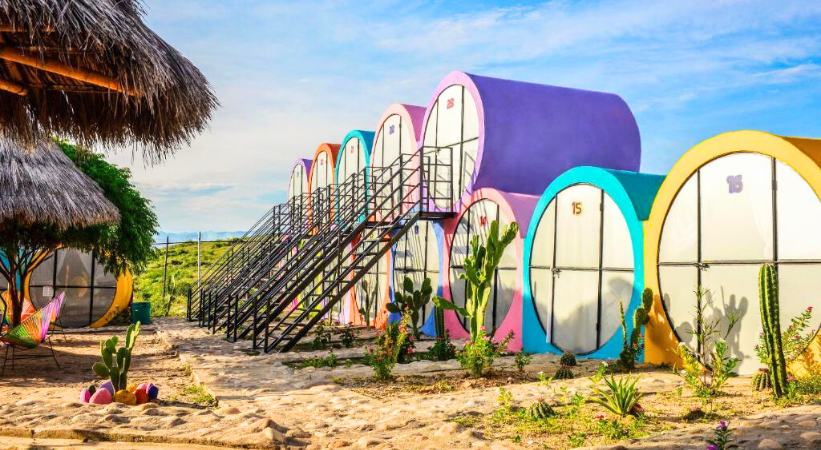
Famous for its magnificent starry nights, the namesake Tatacoa, Colombia’s second-largest desert, is only ten minutes away by car from the Tubo Hotel, La Tatacoa. This rainbow of tiny, air-conditioned apartments with a shared swimming pool is a welcome sanctuary after you’ve seen the huge cactus and odd rock formations of the Tatacoa’s cinnamon-colored dunes.
The 37 capsules, which have enough space for a double bed, are made from concrete sewer pipes that have been painted in candy hues. Although nearly half of the rooms share bathrooms, the room rate is quite low, and there is a restaurant, bar, and shaded garden right outside. “This creative and vibrant place offers you a unique experience,” the hotel’s administrator, Ambar Quintana, adds. “It has everything you need to rest in a natural environment of fresh air and vegetation.”
4. Tom Chudleigh
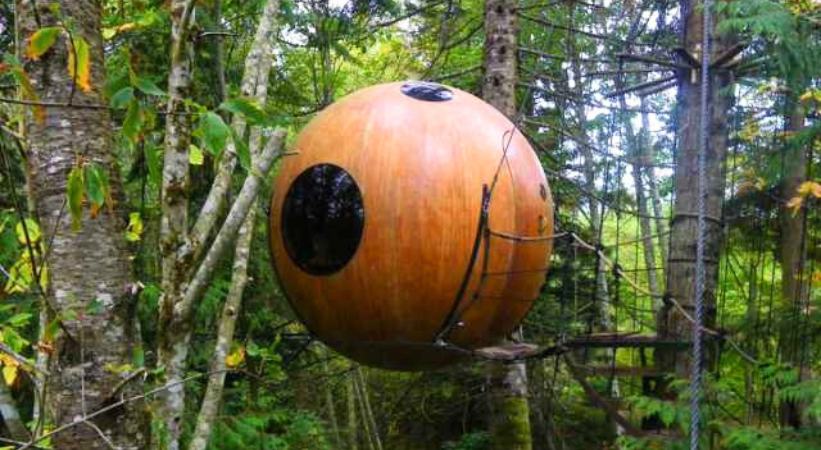
According to owner Tom Chudleigh, the Free Spirit Spheres on Vancouver Island, Canada, feel “like you are floating in the canopy among the sleeping birds” as they are suspended among the conifers like enormous Christmas ornaments. In an effort to protect Canada’s old woods and encourage ecotourism, the first sphere was established 25 years ago.
At present, there are three spheres that are light yet have a robust shell, each based on the biomimicry principle and formed like a gigantic seed pod or nutshell. Newer additions “Melody” and “Luna” are made of fiberglass and have full-size double beds that can be packed, while “Eryn” is made of Sitka spruce and includes a dining area, sink, and a little undersized double bed within. Each sphere can be rented at temperatures as low as -20C, when even using the composting toilet at the base of the lodging will feel adventurous. It is accessible via a spiral stairway that is encircled by a tree.
Because of the design, custom fittings are required, and Chudleigh has painstakingly created every tiny detail, from door handles made of brass to walnut fold-out furniture that maximizes the available space.
5. KINN Capsule
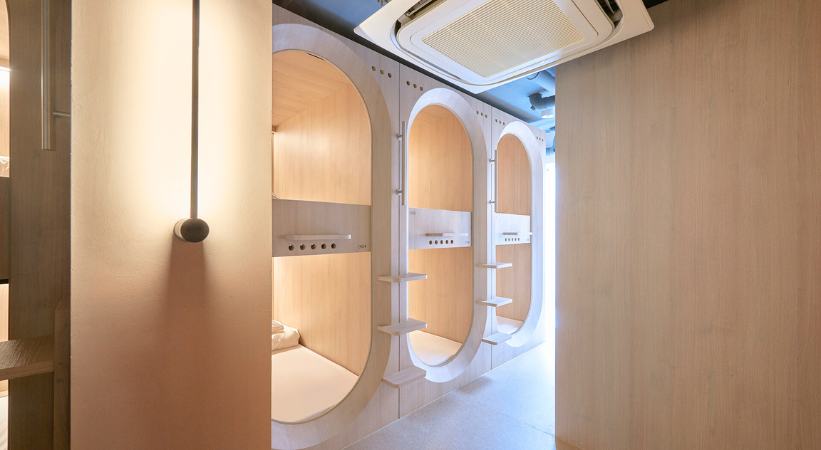
The interior of a Brutalist structure in Chinatown, Singapore, is surprisingly calm. Established in 2021 and featuring a “soft minimalist” aesthetic, KINN Capsule offers a Zen interpretation of the capsule concept, featuring pale wood sleeping chambers with white bed linens and walls painted in soothing peachy tones. With a unique house scent that evokes the wildflowers of a Nordic forest, the place’s scent even seems to be an antidote to its metropolitan setting. Although there are seven rooms and a total of 72 capsules that are separated by blackout shutters, the atmosphere is more boutique than bunkhouse.
6. Suschengliang

In 2019, a traditional mud and wood farmhouse in Zhejiang Province, eastern China, received a prize-winning renovation when it reopened as a community library, bookstore, and capsule hostel. The space sleeps 20 people in small, single-bed-sized chambers hidden amongst local bamboo bookcases. The zigzagging stairways that connect a scattering of little landings are reminiscent of the winding routes found in the Tonglu woodlands. It’s difficult to decide which is more dramatic: the beautiful alpine landscape that can be seen through the translucent floor-to-ceiling panels that illuminate the remote building like a cathedral at night.
7. De Bedstee Hotel
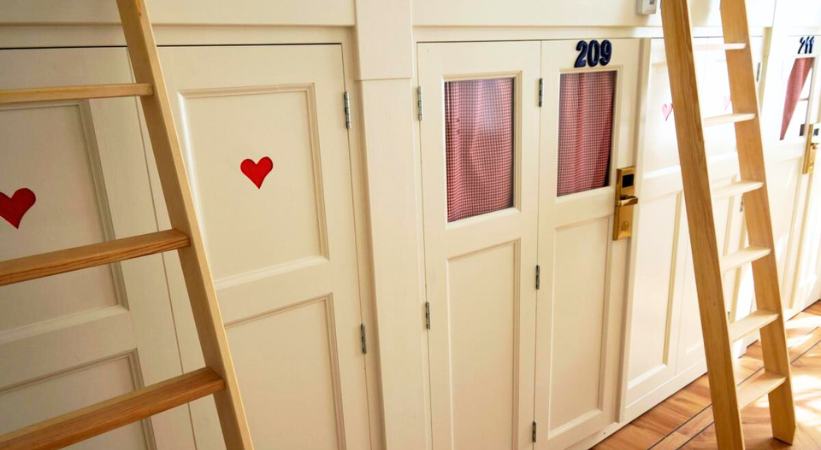
Visitors are paying to sleep in cabinets in Oud Zuid, one of Amsterdam’s most affluent areas. The 17th-century Dutch bedstee (box bed), a bed hidden between cupboard doors to create a snug sleeping nook, is a tradition that the eccentric De Bedstee Hotel borrows. The first-floor dorms, where the bedstee windows are bordered by red gingham curtains and small wooden ladders lead to the capsules above, have a shabby-chic décor that contrasts with the hotel’s Art Deco features and acid-colored wallpaper downstairs. Unwind in the hotel’s tiny terrace garden or watch a number of historic box beds in situ by taking a half-hour walk to the Rembrandt House Museum in the heart of the city.
8. Resol Poshtel Tokyo Asakusa

The Resol Poshtel in Tokyo’s Asakusa neighborhood, which was the Resol Hotel chain’s first foray into capsule sleeping, is another hotel with a distinctive scent. Orange, camomile, and neroli are among the scents that are supposed to create “a feeling of gentle calm”; this may be advantageous considering the shared sleeping arrangements. Only a curtain separates you from other guests at night, yet few one-star hotels can compare to this one in terms of cleanliness and convenience, as amenities like hair brushes, slippers, and razors are provided.
The Edo-era design elements, including the arched entryway of the sleeping cubicles, which evokes tea ceremony chambers, and the traditional Japanese murals that surround the bed, give the hotel’s contemporary lines a touch of history. The lantern-lit Nakamise-dori street, which is packed with a parade of colorful shops offering souvenirs and street food, and Sensō-ji, the city’s oldest Buddhist temple, are all five minutes’ walk away.
Related Article
- TOP 5 Best Hostels in Kauai Hawaii
- 5 Best Places to Stay in Dublin Ireland
- Best Area To Stay In Costa Rica
- Best Area To Stay In New Orleans with Family
FAQs of Tiny Hotel Rooms
Q: What are tiny hotel rooms?
A: Compact accommodations designed for efficiency and unique experiences.
Q: What is the appeal of staying in a tiny hotel room?
A: Unique experiences, cozy atmospheres, and often lower costs.
Q: Where can I find capsule hotels?
A: Primarily in Japan, but also in various cities worldwide.
Q: Are tiny hotel rooms suitable for couples?
A: Yes, many offer a romantic and intimate setting.
Q: Can families stay in tiny hotel rooms?
A: Some tiny hotels accommodate families, but many are better for couples or solo travelers.
Q: What amenities can I expect in tiny hotel rooms?
A: Comfortable bedding, compact bathrooms, Wi-Fi, and sometimes kitchenettes.
Q: How do I choose the right tiny hotel for my trip?
A: Consider location, budget, and the type of experience you want.
Q: Are tiny hotel rooms environmentally friendly?
A: Many prioritize sustainability with eco-friendly designs and minimal waste.
Q: What is the average cost of staying in a tiny hotel room?
A: Prices typically range from $50 to $200 per night.
Q: How can I make the most of my stay in a tiny hotel room?
A: Pack light, embrace the cozy vibe, and explore nearby attractions.

